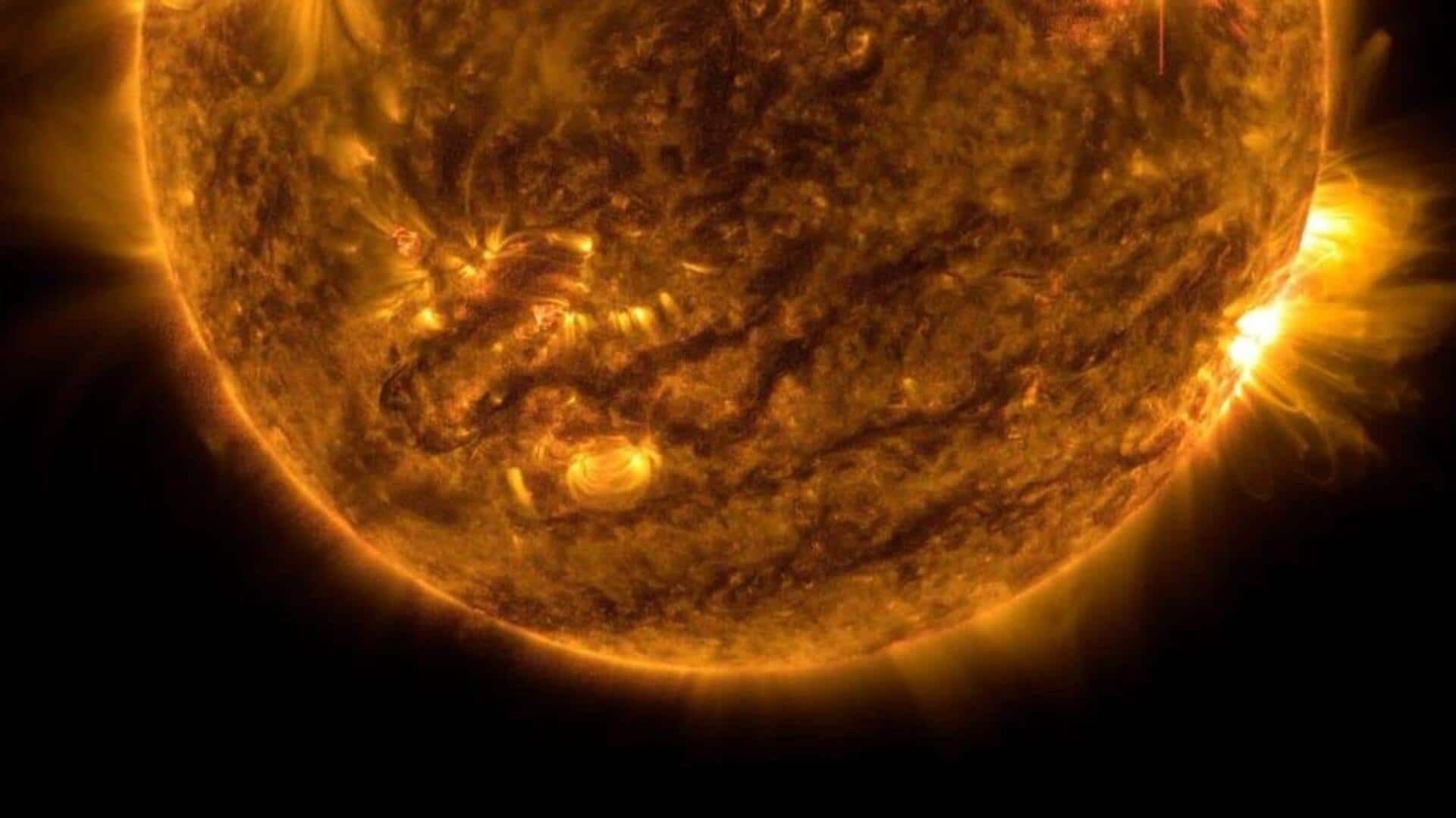
Top 5 discoveries about the Sun in 2023
What's the story
The Sun has been the center of attention in 2023, with several groundbreaking discoveries about the most powerful body in the solar system.
Scientists have discovered that the Sun could be smaller than originally thought and that it could also have shooting stars.
These findings have deepened our understanding of our home star and its influence on the world we live in.
Details
The true size of the Sun
Researchers found that the Sun's corona, or its outer atmosphere, does not extend as far as previously believed. This discovery makes the giant star slightly smaller than we thought.
Up until now, the best way to study the Sun's corona was during solar eclipses, when it is visible around the Moon. However, technological advances have allowed scientists to get a better understanding.
The latest findings reveal the Sun is 0.03%-0.07% smaller, which could have an impact on future studies.
Aurora
Like the Earth, the Sun produces auroras too
Did you know the Sun can produce aurora-like phenomena, similar to those seen on Earth and other planets like Jupiter and Saturn?
Scientists have identified radio signals emanating from a sunspot, cooler regions on the Sun's surface that appear dark by using a radio telescope.
The frequencies of the radio waves were found to be identical to those found in the auroras on Earth. This suggests the auroral processes occurring on the Sun could be similar to that of Earth's.
Solar flare
Most powerful solar outburst to strike Earth
Researchers also discovered evidence of a super solar storm called a Miyake Event from 14,000 years ago. This could be the most powerful solar outburst to hit Earth.
The evidence for this event was unearthed from fossilized tree rings in the French Alps. Solar radiation storms occur when a large-scale magnetic eruption accelerates charged particles in the solar atmosphere to very high velocities, per NOAA.
Recently, the Sun released an energetic X-class solar flare, the most powerful since 2017.
Shooting stars
The Sun has its own shooting stars
In July, scientists found out that the Sun has its own "shooting stars."
These "stars" are denser chunks of plasma that fall in the Sun's atmosphere, like meteors or space rocks that fall through Earth's atmosphere. They're a bit cooler than their surroundings.
The biggest plasma chunks can measure as much as 700km wide and they seem to follow paths made by the Sun's magnetic field. Scientists call this fiery phenomenon "coronal rain."
Insights
Picojets could be fueling solar winds
In August, scientists discovered short-lived jets of energy, called picojects, coming from small dark spots on the Sun, coronal holes. These observations were made using the European Space Agency's Solar Orbiter.
These "picojets" are theorized to trigger solar winds, by providing the required energy and matter.
Per NASA, solar winds are a continuous stream of charged particles that extend outward from the Sun's corona.
Picojets could also explain why the Sun's corona is hotter than its surface.
Solar maximum
Solar cycles could have been shorter in the past
The Sun is heading toward the peak of its solar cycle, called solar maximum. It is expected to reach the maximum in 2024.
Solar cycles last 11 years. The ongoing one is the 25th cycle and it started in 2019.
Ancient Korean texts suggest that past solar cycles may have been shorter than the current 11-year cycle.
The study looks at a period between 1645 and 1715, called the Maunder Minimum and suggests solar cycles only lasted eight years.